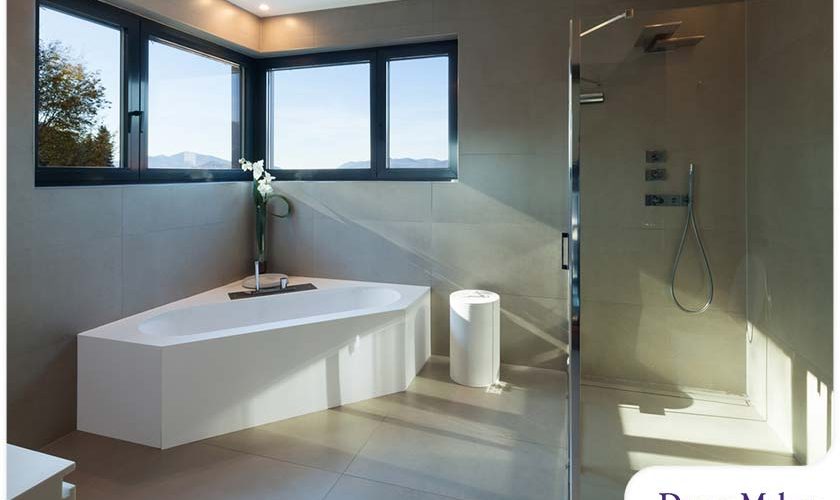
Wet rooms are known for their flexibility, ease of cleaning, and aesthetic appeal, making them a popular choice for remodeling professionals and homeowners. A barrier-free wetroom also provides new bathing options for those with limited mobility, for whom traditional bathrooms are no longer suitable. Many older or disabled residents can benefit from the installation of a wet room because this type of bathroom eliminates the need to step over cumbersome baths and shower trays.
If you’re planning for a bathroom renovation and getting a bathroom quote, read this comprehensive guide to wet room design essentials.
Layout
Just like in any other room, it’s best to plan your layout when designing a wet room. Avoid putting windows in the shower area. Instead, consider installing a skylight, which provides natural lighting and is safe from water splashes. You should also think about your artificial lighting carefully. If there are only a few small directional lights in the bathing area, wet rooms can be dark and foreboding. Ideally, bathroom users should have multiple light sources to choose the level of lighting they require.
Wet rooms can suffer as well if the shower area is too isolated from the rest of the bathroom since this does not provide the same open and luxurious feeling. Consider glass panels or half walls if walls are required. Toilets should be placed as far from shower splash zones as possible or they will constantly be soaked by spray and steam. If possible, relocate the toilet to another room.
Ventilation
Wet rooms deal with a lot of water and humidity, so they must have good ventilation. Bad wet room design can lead to poor ventilation or unwanted heat loss. The best way to let air into a damp room is to use windows and exhaust fans. Windows are a good source of natural ventilation, but exhaust fans allow you to get rid of humidity quickly. The fan’s outside vent should be lower than the fan’s intake on the inside. This prevents the stacking effect and keeps the right amount of moisture in the air. Furthermore, make sure the fans blow air upward or to the side. You can avoid this mistake by working with a trusted bathroom remodeler near me.
Shower Head and Screen Placement
To prevent water from puddling outside your shower area, install a glass screen or other partition that will keep water from splashing on the dry area of your bathroom. When using glass screens, make sure to think about how water will bounce off the body. During a shower, 70% of water falls are within 600 mm of the shower head. When water hits the body, it comes into contact with several curves and angles, so it sprays out in almost every direction. Put your glass deflector screens next to the shower head to stop this from happening.
Let’s Start a Conversation!
Achieve your dream wet room design with one of the most trusted experts in home improvement — DreamMaker Bath & Kitchen of Greater Rockwall. Our services cover all aspects of home remodeling. For a bathroom estimate, call us at (469) 564-0146. You can also fill out our contact form to book an appointment.













